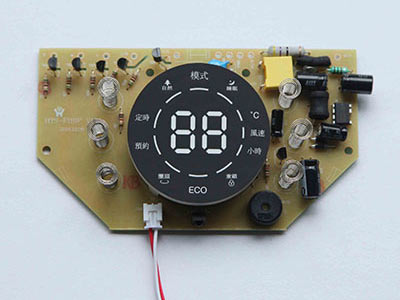When the temperature is too high, the fan speed usually changes to adapt to the heat dissipation requirements. Specifically, the speed of the fan varies depending on its control mechanism and system design. The following is a detailed analysis of this process:
I. Control mechanism
Temperature sensing control:
Many fan systems are equipped with temperature sensors (such as thermistors or thermal switches) to monitor the ambient temperature or the temperature of specific components (such as cpus, graphics cards, etc.).
When the temperature reaches a preset threshold, the sensor sends a signal to the fan control board or control system, triggering the adjustment of the fan speed.
Intelligent control algorithm:
Some advanced fan systems use intelligent control algorithms, such as PID (proportional integral-differential) control algorithm, automatically adjust the fan speed according to temperature changes, in order to achieve more accurate heat dissipation effect.
Two, speed change
Initial speed:
When the system is just starting up, the fan may run at a lower initial speed to save energy and reduce noise.

Speed increase:
When the temperature gradually increases and reaches a preset threshold, the fan speed starts to increase. The specific speed increase depends on the speed of temperature change and the design of the fan system.
For example, in some systems, when the coolant temperature reaches 95 ° C, the fan may operate at a speed of about 1600 RPM; When the temperature reaches 105 ° C, the fan speed may be increased to about 2400 RPM to improve the heat dissipation speed.
Continuous monitoring and adjustment:
The fan system continuously monitors temperature changes and adjusts the fan speed as needed. Once the temperature drops to a safe range, the fan speed may be reduced or restored to the initial state accordingly.
3. Practical applicationComputer cooling:
In computers, key components such as the CPU and graphics card usually generate a lot of heat. When the temperature of these components is too high, the fan automatically increases the speed to ensure that the heat can be dissipated in time to prevent the system from overheating.
Automotive cooling:
The engine of a car also needs a fan to dissipate heat. When the coolant temperature reaches a certain threshold (such as above 85 ° C), the tank fan starts to operate to help reduce the temperature of the coolant. As the temperature increases, the fan speed increases accordingly.
Four, precautions
When using the fan in a high temperature environment, ensure that the heat dissipation effect of the fan is good, and avoid the fan being blocked by dust and dirt.
If the fan fails to work properly when the temperature is too high or the speed is abnormal, check and replace the damaged parts in time to prevent the system from overheating and leading to more serious faults.
About
Company Profile Corporate imageApplication CasesProduct
News
Company News Industry News Common problem+86 769-81555631-808
Monday to Sunday 8:30-21:30
(Welcome to call us for consultation)
 App
App